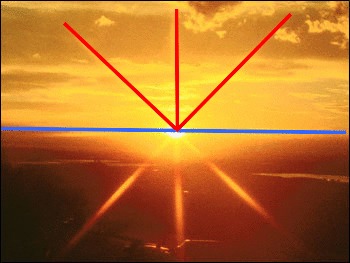
(v) m and n are parallel lines and l is the transversal. ∠1 and ∠2 are interior angles on the same side of the transversal. (iv) m and n are parallel lines l is the transversal. (iii) m and n are parallel lines l is the transversal (ii) m and n are parallel lines and l is the transversal ∴ ∠1 and ∠2 are exterior angles on the same side of the transversal. (i) m and n are parallel lines and l is the transversal.

Tamilnadu Samacheer Kalvi 7th Maths Solutions Term 1 Chapter 5 Geometry Ex 5.2
#SUPPLEMENTARY ANGLE IN REAL LIFE PDF#
Vertical angles are the angles that are formed when two lines intersect each other.Students can Download Maths Chapter 5 Geometry Ex 5.2 Questions and Answers, Notes Pdf, Samacheer Kalvi 7th Maths Book Solutions Guide Pdf helps you to revise the complete Tamilnadu State Board New Syllabus and score more marks in your examinations. What is the Difference between Adjacent Angles and Vertical Angles?Īdjacent angles always share a common vertex and a common side and they do not overlap each other. It is necessary for the angles to fulfill both the properties. If any two angles satisfy only one of these properties, they will not be considered adjacent angles. Adjacent angles always share a common vertex.Adjacent angles always share a common side.
#SUPPLEMENTARY ANGLE IN REAL LIFE HOW TO#
How to Identify Adjacent Angles?Īdjacent angles can be easily identified with the help of two main properties:

However, linear pair of angles always form a straight line, and hence they always sum up to 180°. They just need to fulfill the property that they share a common vertex and a common side. What is the Difference Between Adjacent Angles and Linear Pair of Angles?Īdjacent angles may or may not form a straight line together. If the adjacent angles do not form linear pairs, they will not add up to 180°. If two adjacent angles are placed next to each other on a straight line they will add up to 180° because these will be adjacent supplementary angles. The sum of two adjacent angles can be either complementary or supplementary based on their measures. The angles which are placed next to each other on one vertex and share one side are adjacent angles. No, adjacent angles can never be one on top of the other, or in other words, the angles cannot overlap. For example, in the steering wheels of the car, the three hands of the clock, two pizza slices that are placed next to each other in the pizza box, and so on. Give Some Examples of Adjacent Angles in Daily Life.Īdjacent angles can be commonly seen in our daily lives. Adjacent angles are the two angles next to each other while vertical angles are opposite to each other. No, vertical angles can never be adjacent. Any two adjacent angles can be complementary angles or supplementary angles according to the sum of the measurement of angles. Adjacent angles can be defined as two angles that have a common vertex and a common side. Yes, adjacent angles can be supplementary if they sum up to 180°. Two angles are said to be adjacent angles, if, they have the following characteristics: If the sum of two adjacent angles is 180° then the non-common arms form a line.Ĭheck out these interesting articles to know more about Adjacent Angles and their related topics.įAQs on Adjacent Angles What are Adjacent Angles in Geometry?.To form a linear pair the lines need to intersect each other and must form adjacent angles. However, all supplementary angles need not be linear pairs.

All linear pairs are supplementary because supplementary angles sum up to 180°.


 0 kommentar(er)
0 kommentar(er)
